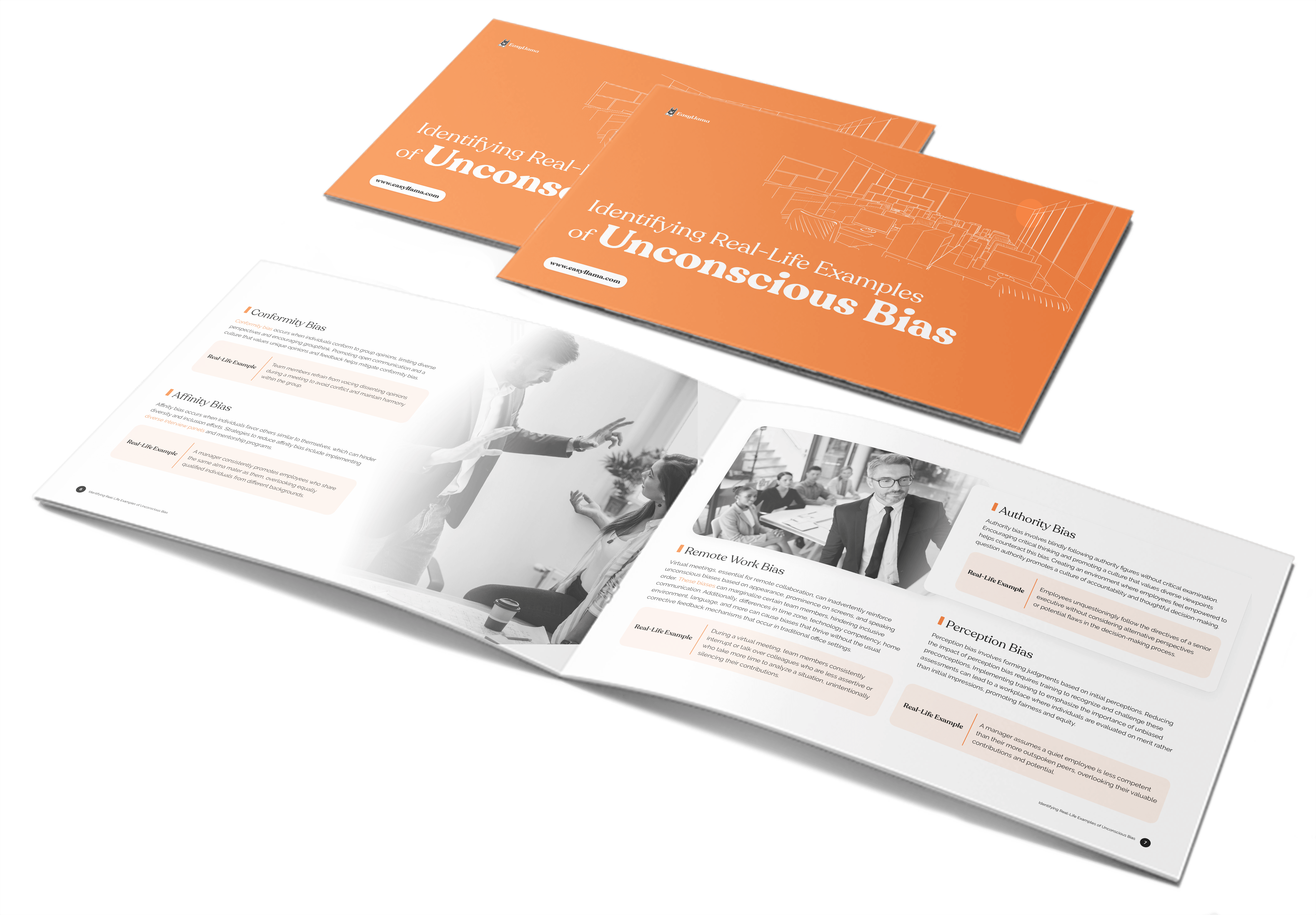Identifying Real-Life Examples of Unconscious Bias
Unconscious biases are often subtle and/or unintentional, but can significantly influence decision-making processes, affecting recruitment, team dynamics, and overall organizational culture. Let's discuss the many different types of unconscious bias, how they may impact your workplace, and, most importantly, what to do to mitigate their effects.

Get Your Organization Trained Today
TRUSTED BY OVER 8,000 AMAZING COMPANIES
closer look
What's Inside
- 1
What is Unconscious Bias?
Unconscious bias refers to the subtle, ingrained prejudices that influence decision-making without conscious awareness.
- 2
Gender Bias
Gender bias manifests in preconceived notions about individuals based on their gender or discrimination against specific gender identities.
- 3
Ageism
Ageism involves stereotypes and discrimination based on age, particularly older workers.
- 4
Name Bias
Name bias involves making assumptions about individuals based on their names.
- 5
Halo and Horns Effect
The halo effect occurs when positive traits overshadow a person's overall evaluation, while the horns effect involves negative traits influencing perceptions.
- 6
Confirmation Bias
Confirmation bias involves favoring information that confirms preexisting beliefs or stereotypes.
- 7
Conformity Bias
Conformity bias occurs when individuals conform to group opinions.
- 8
Affinity Bias
Affinity bias occurs when individuals favor others similar to themselves.
- 9
Status Quo Bias
Status quo bias involves resistance to change, hindering innovation and growth.
- 10
Anchor Bias
Anchor bias influences decisions based on the initial piece of information received.
- 11
Authority Bias
Authority bias involves blindly following authority figures without critical examination.
- 12
Remote Work Bias
Virtual meetings, essential for remote collaboration, can inadvertently reinforce unconscious biases based on appearance, prominence on screens, and speaking order.
- 13
Perception Bias
Perception bias involves forming judgments based on initial perceptions.
- 14
Why It's Important to Tackle Biases
Unchecked unconscious biases can lead to a host of negative consequences, including a lack of diversity, diminished creativity, and a toxic work environment.